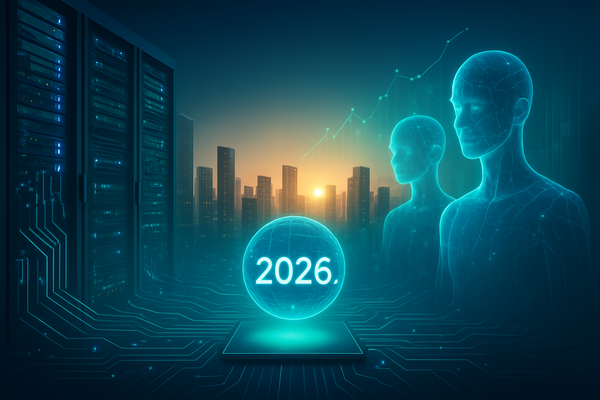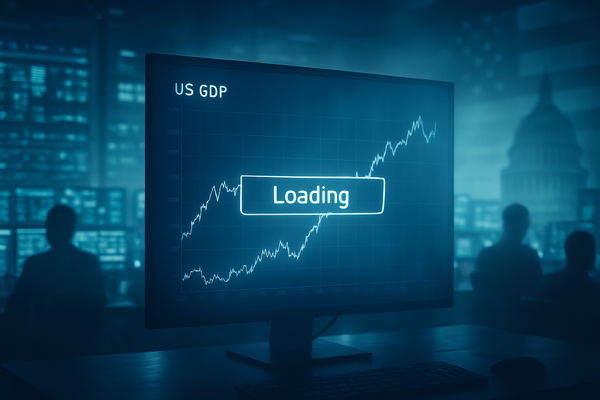Tech's AI Surge Meets Pharma's Resilient Recovery: A Tale of Two Markets in Late 2025

The financial markets as of November 5, 2025, present a compelling dichotomy with the technology and pharmaceutical sectors charting distinct yet largely positive courses. While technology continues its robust ascent, fueled by the insatiable demand for Artificial Intelligence (AI) and its underlying infrastructure, the pharmaceutical sector demonstrates a resilient recovery, driven by innovative therapies and strategic partnerships. Both sectors, however, face unique headwinds, from tech's valuation anxieties to pharma's regulatory pressures, setting the stage for a dynamic end to the year.
This period is marked by persistent investor optimism and strong corporate profitability, especially within the tech sphere where AI's "picks and shovels" phase is driving significant spending. Meanwhile, pharmaceuticals are capitalizing on scientific breakthroughs and a strategic shift towards personalized medicine. The immediate implications for investors include navigating valuation concerns in tech and closely monitoring crucial FDA decisions and earnings reports in the pharma space, as both sectors navigate a complex economic landscape.
Sector Performance Deep Dive: AI's Grip on Tech and Pharma's Innovation Drive
The technology sector's performance in late 2025 has been nothing short of electrifying, largely orchestrated by the relentless march of Artificial Intelligence. The "picks and shovels" phase of generative AI, focusing on the foundational infrastructure, has created a boom for semiconductor and hardware companies. This trend has propelled the S&P 500 and the Nasdaq Composite to impressive year-to-date gains, exceeding 16% and 22% respectively as of November 3, 2025. October saw the Nasdaq surge by 4.7%, underscoring the sector's bullish momentum. However, this ascent has not been without its tremors; November 4th and 5th witnessed a temporary pullback as valuation concerns gripped the market, with the S&P 500 declining 1.2% and the Nasdaq 100 dropping 2.0% overnight. High-profile tech giants like Tesla (NASDAQ: TSLA) and Nvidia (NASDAQ: NVDA) experienced significant dips, falling 5.2% and 4.0% respectively, before a rebound on November 5th.
This volatility highlights a critical juncture for the tech sector: while earnings growth remains robust, two-thirds of traders now perceive the market as overvalued, especially for AI-boosted stocks. The timeline leading up to this moment has seen a continuous escalation in AI investment and development throughout 2024 and 2025, with major tech players vying for dominance. Key stakeholders include semiconductor manufacturers, cloud service providers, and software developers at the forefront of AI innovation. The initial market reaction to any hint of overvaluation or interest rate concerns has been swift, demonstrating a cautious optimism intertwined with sensitivity to macroeconomic factors.
Conversely, the pharmaceutical sector has showcased remarkable resilience and outperformance over the past two years, moving into "recovery mode" after a challenging 2023. The Nifty Pharma Index, for instance, has risen 51% over two years, eclipsing the broader market indices. This resurgence is largely attributed to strong growth drivers, particularly the development and adoption of GLP-1s and other innovative therapies. Scientific breakthroughs and an accelerated pace of business, with a focus on prevention, personalization, prediction, and point of care, are reshaping the industry landscape.
As of Q4 2025, the sector maintains resilience across most regions, achieving low single-digit sales growth year-over-year. A notable increase in bullish sentiment for healthcare among traders, up 10 percentage points from Q3 to Q4 2025, further solidifies this positive outlook. Key events shaping the immediate future include crucial FDA decisions for investigational drugs in November 2025, involving companies like Otsuka Pharmaceutical, Kura Oncology, and Bayer. Additionally, earnings reports, such as Sun Pharmaceutical Industries' (NSE: SUNPHARMA) Q2 FY26 results on November 5, 2025, are closely watched for insights into stable yet modest growth trajectories. The sector's key players range from established pharmaceutical giants to innovative biotech firms, all navigating a landscape increasingly defined by scientific advancement and strategic partnerships.
Navigating Gains and Losses: Who Stands to Win and Lose
In the technology sector, the clear winners are companies deeply entrenched in the AI infrastructure buildout. Semiconductor manufacturers, particularly those producing advanced AI chips, are experiencing unprecedented demand. Companies like Nvidia (NASDAQ: NVDA), despite recent pullbacks, remain a titan in this space due to their dominance in GPU technology essential for AI computations. Cloud computing providers, such as Microsoft (NASDAQ: MSFT) and Amazon (NASDAQ: AMZN), are also significant beneficiaries as they host and provide the scalable infrastructure required for AI development and deployment. Their enterprise software divisions are integrating AI tools, creating new revenue streams and enhancing product offerings. Furthermore, specialized AI software companies that develop platforms, models, and applications are seeing robust investment and adoption. These companies are poised to continue their growth trajectory as the monetization phase of AI begins to unfold in 2026.
On the flip side, losers in the tech sector could include companies that fail to adapt quickly enough to the AI paradigm shift or those whose business models are disrupted by AI. Companies with less differentiated offerings or those heavily reliant on older technologies may struggle to compete. Furthermore, the recent market volatility due to valuation concerns suggests that overvalued tech stocks, especially those with speculative growth prospects rather than tangible earnings, could face significant corrections. Companies like Tesla (NASDAQ: TSLA), which experienced a sharp decline on November 4th, illustrate how even high-growth companies can be vulnerable to market jitters if their valuations are perceived as stretched. The intense competition and evolving regulatory landscape also pose risks, potentially squeezing margins or limiting market access for some players.
Within the pharmaceutical sector, winners are predominantly those with robust pipelines of innovative therapies, particularly in high-demand areas like GLP-1s and other specialty drugs. Companies successfully navigating the FDA approval process for novel treatments stand to gain significantly. For instance, companies awaiting crucial FDA decisions in November 2025, such as Otsuka Pharmaceutical (TYO: 4578) with Sibeprenlimab, Kura Oncology (NASDAQ: KURA) with Ziftomenib, and Bayer (ETR: BAYN) with Sevabertinib, could see substantial stock movements based on favorable outcomes. Companies like Wockhardt (NSE: WOCKHARDT) and Neuland Laboratories (NSE: NEULANDLAB), which have delivered exceptional returns (up to 492% and 344% respectively over two years), exemplify the potential for significant gains through strategic product development and market positioning. Large pharmaceutical companies that engage in strategic deal-making and partnerships with innovative biotech firms also strengthen their pipelines and market position.
Conversely, losers in the pharmaceutical sector may include companies struggling with R&D productivity, facing patent cliffs for blockbuster drugs without adequate replacements, or those heavily impacted by increasing pricing pressures from administrations. Companies with a limited pipeline of new drugs or those failing to innovate in areas of high unmet medical need could see their market share erode. The mixed recent returns for some companies, like Jubilant Pharmova (NSE: JUBLPHARMA) and Piramal Pharma (NSE: PIRAMALPH), which experienced negative one-year returns, indicate that even within a recovering sector, individual company performance can be highly variable, often dependent on specific drug approvals, market penetration, and financial health. The threat of stricter regulations or increased scrutiny over drug pricing could also negatively impact profitability for some pharmaceutical players.
Broader Implications: Reshaping Industries and Regulatory Landscapes
The distinct trajectories of the technology and pharmaceutical sectors in late 2025 are not isolated phenomena but rather integral components of broader industry trends that are reshaping the global economic landscape. For technology, the pervasive integration of Artificial Intelligence represents a paradigm shift comparable to the advent of the internet. This isn't merely a technological upgrade but a fundamental re-architecture of how businesses operate, how services are delivered, and how consumers interact with technology. The "AI buildout" phase, characterized by massive investments in data centers, cloud infrastructure, and advanced semiconductors, is creating a new foundational layer for the digital economy. This trend extends beyond the tech sector, impacting manufacturing, logistics, finance, and healthcare, as every industry seeks to harness AI for efficiency and innovation.
The potential ripple effects on competitors and partners are profound. Companies that successfully integrate AI into their operations will gain a significant competitive edge, potentially leaving behind those that are slower to adapt. This could lead to a further consolidation of power among tech giants that possess the resources for large-scale AI development. For partners, it opens up new avenues for collaboration in developing specialized AI applications and services. Regulatory and policy implications are also rapidly evolving; governments worldwide are grappling with how to regulate AI to ensure ethical use, data privacy, and prevent monopolies. Discussions around AI governance, intellectual property rights for AI-generated content, and potential job displacement are becoming central to policy debates. Historically, similar technological revolutions, such as the internet boom, have shown periods of intense growth followed by consolidation and increased regulatory scrutiny, suggesting a familiar pattern for AI.
In the pharmaceutical sector, the focus on innovation, particularly in personalized medicine and novel therapies like GLP-1s, reflects a broader shift in healthcare towards more targeted and effective treatments. This trend is driven by advancements in genomics, biotechnology, and data analytics, allowing for a deeper understanding of diseases and individual patient responses. The acceleration in scientific breakthroughs is not only improving patient outcomes but also driving significant value creation within the industry, moving towards prevention, personalization, prediction, and point-of-care solutions. This impacts the entire healthcare ecosystem, from research institutions to insurance providers and healthcare systems, as they adapt to more sophisticated and often more expensive treatment modalities.
The ripple effects extend to biotech startups, which are increasingly becoming attractive acquisition targets or strategic partners for larger pharmaceutical companies seeking to replenish their pipelines. This fosters a dynamic environment of deal-making and collaboration. Regulatory implications in pharmaceuticals remain a constant, with agencies like the FDA playing a critical role in approving new drugs and ensuring their safety and efficacy. Furthermore, political pressures to lower drug prices, as seen under various administrations, continue to be a significant factor, potentially impacting profitability and R&D investment decisions. Historically, the pharmaceutical industry has always been cyclical, with periods of groundbreaking innovation leading to significant growth, often followed by increased scrutiny over pricing and market access, mirroring the current landscape.
What Comes Next: Navigating Future Horizons
Looking ahead, both the technology and pharmaceutical sectors are poised for continued evolution, presenting a mix of short-term challenges and long-term opportunities. For technology, the immediate focus for the remainder of 2025 is expected to remain on the "AI buildout," with sustained investment in foundational infrastructure. However, as we transition into 2026, the market's attention is anticipated to pivot towards the crucial phase of AI monetization. This will involve identifying which companies can effectively translate their AI investments into tangible revenue streams and sustainable profitability, moving beyond the initial hype cycle. This shift will likely lead to strategic pivots for many tech firms, requiring them to adapt their business models to integrate AI into core products and services, creating new value propositions for consumers and enterprises. Market opportunities will emerge for companies that can deliver practical, scalable, and ethically sound AI solutions, while challenges will intensify for those struggling to demonstrate clear ROI from their AI initiatives or facing intense competition from established players.
In the pharmaceutical sector, the short-term outlook is shaped by ongoing regulatory decisions and earnings reports. The crucial FDA decisions for investigational drugs in November 2025 will provide immediate catalysts or headwinds for specific companies. Over the long term, the sector is expected to remain in "recovery mode," driven by a relentless pursuit of innovation in areas like GLP-1s and personalized medicine. Strategic adaptations will involve continued investment in R&D, fostering partnerships with biotech firms to diversify pipelines, and navigating the complex landscape of drug pricing and market access. Market opportunities will emerge for companies at the forefront of scientific breakthroughs, particularly those developing therapies for unmet medical needs or offering significant improvements over existing treatments. Challenges will persist in the form of regulatory hurdles, intense competition, and the ever-present pressure to balance innovation with affordability. Potential scenarios include further consolidation through mergers and acquisitions as larger firms seek to acquire innovative smaller players, and a continued push towards precision medicine, leveraging genetic and molecular insights for highly targeted therapies.
Comprehensive Wrap-up: A Dynamic Market Landscape
In summary, the financial markets in late 2025 are characterized by the robust yet volatile performance of the technology sector, propelled by the Artificial Intelligence revolution, and the resilient recovery of the pharmaceutical sector, driven by innovation and strategic partnerships. Key takeaways from this period include the immense capital flowing into AI infrastructure, leading to significant gains for semiconductor and cloud computing giants, alongside growing investor concerns regarding elevated valuations in the tech space. Simultaneously, the pharmaceutical industry is demonstrating strong outperformance, fueled by novel therapies and a strategic shift towards personalized medicine, despite ongoing pressures related to drug pricing and regulatory approvals.
Moving forward, the market is poised for continued dynamism. Investors in the technology sector should closely watch the transition from AI "buildout" to "monetization," focusing on companies that can demonstrate clear profitability and sustainable growth from their AI investments. The potential for further market corrections due to valuation concerns remains a factor, necessitating careful due diligence. For the pharmaceutical sector, the emphasis will be on the outcomes of critical FDA decisions, the success of new product launches, and the continued ability of companies to innovate and expand their pipelines through R&D and strategic collaborations. The broader macroeconomic environment, including interest rate trajectories and global economic growth, will also play a significant role in shaping both sectors' performances.
Ultimately, the significance of these trends lies in their potential to fundamentally reshape industries and redefine economic value. The AI revolution in technology promises to enhance productivity and create new markets, while pharmaceutical innovations are set to transform healthcare and improve human well-being. Investors should remain vigilant, focusing on companies with strong fundamentals, clear growth strategies, and the agility to adapt to rapidly evolving market and regulatory landscapes in the coming months. The interplay between technological advancement, scientific discovery, and market sentiment will continue to define the investment landscape, offering both considerable opportunities and inherent risks.
This content is intended for informational purposes only and is not financial advice



